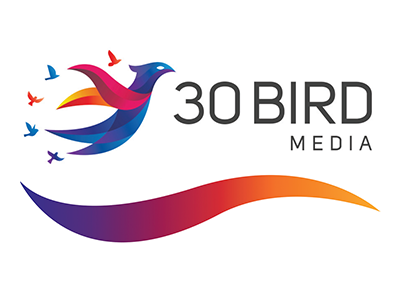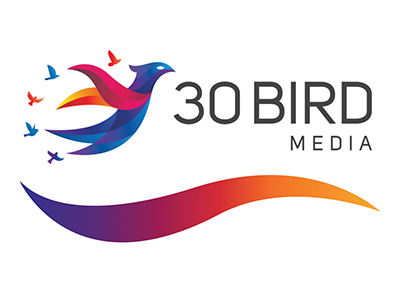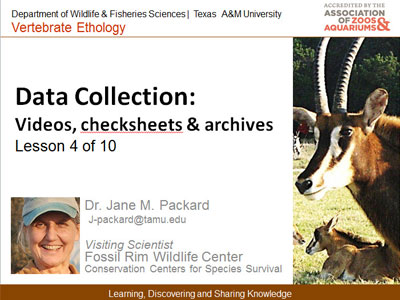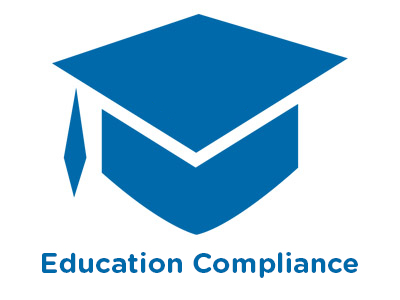 |
Customer Service Fundamentals |
1.00 |
In this course, you will learn about the importance of customer service and the pitfalls to avoid when providing customer service. This includes how to identify types of customers and their needs. Then, you’ll learn about building rapport with your customers through good customer service habits. Part of building rapport includes effective communication with customers, including how to correct a customer, the importance of body language and tone, and about telephone etiquette. You’ll learn how to respond to your customers and how to use questions. Then, you will be instructed about how to accentuate the positive and provide proactive service. Finally, you will learn how to surpass expectations by going the extra mile for the customer. |
 |
Customer Service Skills |
1.00 |
This course will help you develop customer service skills by teaching you how to develop and maintain a positive attitude. You will learn how to use motivation to improve customer service skills, and will go through the seven steps in the customer service process. Finally, you will discover how to react to customers’ problems and learn from them. |
 |
Customer Service: Customer Service Basics |
0.75 |
It is amazing how much time, effort, and money is invested in sales education. However, customer service is not given the same level of resources. If you think about selling as a process, the final phase is not closing the sale, it’s serving the customer. After an effective sales process awards you a new customer, it is customer service that will determine whether your customer stays with you. |
 |
Customer Service: Customer Service Skills |
1.00 |
A great customer service representative should have skills in three key areas: organization (time and stress management), motivation (letting customers know you care), and communication (vocal, verbal, and visual). The core strength of a good customer service rep is sound knowledge of the organization’s products and services. |
 |
Customer Service: Greeting Customers |
1.00 |
Answering the phone when you know that you might be on the wrong end of a verbal confrontation is difficult, but it’s the first step in dealing with customer service issues. How you answer the phone will set a tone with the customer on the other end. Greeting a customer requires much more than a simple “Hello, how can I help you?” |
 |
Customer Service: Listening and Questioning |
0.75 |
This topic will discuss the various types of listening: passive, selective, and active. You will learn that paraphrasing or summarizing what the customer says is a good way to confirm what you hear. In this course, you will also learn about questioning and the types of questions that are used to elicit the information you want from customers. There are four types of questions: open-ended, closed, alternative-choice, and clarifying. This course will also discuss the examination process that can be used to understand the customer’s problem and prescribe a realistic solution. |
 |
Customer Service: Resolving Issues |
0.50 |
This course will cover how to show appreciation to customers, especially those who have been difficult. You will also learn how to follow up with customers after resolving customer service problems. |
 |
Customer Service: Responding |
1.00 |
After the greeting, listening, and questioning phases, the next phase is responding to a customer. Once you clearly understand a situation, your response will set the tone for the interaction. Without handling situations properly and without the right level of care, you can upset customers and ultimately drive them away. Responses must be timely and within expectations. If a customer is discussing a problem with you, then you know that at least one of that person’s expectations has not been met. |
 |
Customer Service: Using What You've Learned |
0.25 |
This course will provide you with the information and—we hope—the inspiration to improve your customer service skills and work toward personal success. The final two steps are up to you: You must implement what you have learned, and continue to work on improving your skills. |
 |
Customer Service: Using What You've Learned (Corrections) |
0.25 |
This course will provide you with the information and—we hope—the inspiration to improve your customer service skills and work toward personal success. The final two steps are up to you: You must implement what you have learned, and continue to work on improving your skills. |
 |
CWNP Certified Wireless Specialist - Exam CWS-101 |
8.00 |
Certified Wireless Specialist - Exam CWS-101 covers the fundamentals Wireless Fidelity (Wi-Fi) technologies for wireless communications. The student will learn the basics of how Radio Frequencies (RF) are utilized by Wi-Fi with hardware and software to create wireless local area networks (WLANs). Upon completion of this course, the student will have the knowledge required for the CWS-101 exam and CWS certification.
This vendor neutral course assumes that the student has a basic knowledge of using wireless computing devices and wireless networks. The exam objectives are marked throughout the course, with applicable acronym and objective indexes. |
 |
CWNP Certified Wireless Specialist CWS-101 Exam Prep |
1.00 |
Exam Prep to accompany 30 Bird's CWNP Certified Wireless Specialist - Exam CWS-101 course. |
 |
CWNP Certified Wireless Technician - Exam CWT-101 |
8.00 |
This entry-level certification (Certified Wireless Technician - Exam CWT-101) is offered by Certified Wireless Network Professionals, or CWNP, as part of a vendor-neutral wireless certification program.
According to CWNP, the Certified Wireless Technician (CWT) should be able to install APs based on a design document, configure the AP for initial operations and ensure connectivity, troubleshoot basic problems, and assist users in-person or through remote communications in problem resolution. Perhaps the most important skill is the ability to set up a WLAN client for connectivity, including SSID configuration, security settings, and other client adapter settings. |
 |
CWNP Certified Wireless Technician CWT-101 Exam Prep |
1.00 |
Exam Prep to accompany 30 Bird's CWNP Certified Wireless Technician - Exam CWT-101 course. |
 |
Cyberbullying |
1.00 |
Cyberbullying is bullying that takes place over digital devices like cell phones, computers, and tablets. Cyberbullying can occur through SMS, text, and apps, or online in social media, forums, or gaming where people can view, participate in, or share content. Cyberbullying includes sending, posting, or sharing negative, harmful, false, or mean content about someone else. It can include sharing personal or private information about someone else, causing embarrassment or humiliation. Some cyberbullying crosses the line into unlawful or criminal behavior.
In this course, you will:
• Learn the definition of cyberbullying
• Discover tactics on preventing cyberbullying
• Discover tips on communicating with parents and teachers, and how to report instances of cyberbullying |
 |
Cybersecurity Fundamentals |
1.00 |
With the increasing use of technology in all facets of life, the internet has quickly become a necessity in doing business, getting an education, providing medical care, and operating on a daily basis. The internet is essential to most industries and sectors that you could work in. This importance and usage also bring along the negatives of the internet. Cyber attackers can steal information from people who are not careful nowadays and you need to be able to protect yourself.
This course provides information on the internet and how to mitigate the risks of operating online to avoid putting yourself in danger. In addition, you will also learn about how to protect your data and respond effectively to any sort of cybersecurity incident. |
 |
Daily Schedule Development with Child-Centered Activities (CDA 5) |
2.00 |
This course delves into the essential balance of structure and flexibility within early learning environments. Discover how a well-ordered daily schedule fosters confidence and security in young children while nurturing their natural curiosity. Explore strategies for creating age-appropriate schedules that meet their developmental needs and unlock the power of child-centered learning opportunities. |
 , ,  |
Dance for Joy: Confident, Calm, and Compassionate |
1.00 |
This module from Dance for Joy will provide teachers with resources and activities that can be used and modified to support physical, mental, social, and emotional development in young children.
This course covers 5 activities: Tickle the Sky, Tapping, Every Little Cell, We are One, Scoop up the Universe. |
 |
Dance for Joy: Movement, Music, and Rhyme |
1.00 |
This module from Dance for Joy will provide teachers with resources and activities that can be used and modified to support physical, mental, social, and emotional development in young children.
This course covers 5 activities: I Touch My Nose, I Touch My Toes, Hold Yourself Tight, Wake Up Right, Reach One Way, Reach the Other, Locomotor Freeze Dance, Salt and Pepper Dance. |
 |
Data Collection: Videos, Check-sheets & Archives |
1.00 |
Do you have an enthusiastic team of volunteers and are concerned about observer reliability? Learn how to fine-tune behavioral observation protocols to maximize accuracy and reliability. The advantages and disadvantages of video records and check-sheets will be discussed as well as ethograms. A workable process for recording and archiving video-data will be demonstrated, to facilitate efficient sharing within a team. |
 |
Data Security Training |
1.00 |
Data hacks in higher education are the second-highest category of reported industry breaches, accounting for 17 percent of all reported hacks. Resolving data hacks is expensive, costing anywhere from hundreds of thousands to millions of dollars. Understanding how to maintain data security is key to preventing hacks and keeping sensitive data private. |
 |
Deaf-Blindness and Communication for Paraprofessionals |
1.00 |
This course covers Deaf-Blindness and Communication. It will help you develop new knowledge about deaf-blind students. You will learn what communication systems to use and strategies to implement in the classroom. It will also help you understand your role as a paraprofessional when working with a deaf-blind student. |
 |
Deaf-Blindness and Communication for Teachers |
1.00 |
This course covers Deaf-Blindness and Communication. It will help you develop new knowledge about deaf-blind students. You will learn what communication systems to use and strategies to implement in the classroom. It will also help you understand your role when working with a student who is deaf-blind. It is just one out of many teacher courses we offer. |
 |
Dementia and Oral Health |
1.00 |
Dementia is one of the main causes of disability among older adults. Alzheimer’s disease is the most common form of dementia. The oral health of patients with Alzheimer’s disease can be worse than that of those without dementia. Therefore, maintaining good oral health is an important and integral part of their general health. The purpose of this educational module is to provide an overview of oral health and the importance of oral care for patients with Alzheimer’s disease. |
 |
Desarrollar habilidades de comunicación importantes y exitosas (CDA 3) (Spanish) Developing Important and Successful Communication Skills (CDA 3) |
2.00 |
¡Libera los superpoderes de comunicación de tus jóvenes alumnos! Este curso le proporciona consejos apropiados para su edad para ayudar a que los bebés, los niños pequeños, los preescolares y los niños en edad escolar se desarrollen. Observe cómo aumentan sus habilidades lingüísticas y socioemocionales a medida que navegan con confianza en las transiciones, participan en juegos y aprendizajes enriquecedores, construyen relaciones significativas y se convierten en solucionadores de problemas capacitados.
Unleash the communication superpowers of your young learners! This course equips you with age-appropriate tips to help infants, toddlers, preschoolers, and school-age children blossom. Watch their language and social-emotional skills soar as they confidently navigate transitions, engage in enriching play and learning, build meaningful relationships, and become empowered problem-solvers. |

















 ,
, 








